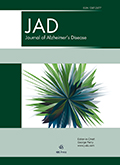Authors: Zhou, Moran | Jiao, Qian | Wu, Zengrui | Li, Weihua | Liu, Guixia | Wang, Rui | Tang, Yun
Article Type:
Research Article
Abstract:
Background: The oxidative stress hypothesis is challenging the dominant position of amyloid-β (Aβ ) in the field of understanding the mechanisms of Alzheimer’s disease (AD), a complicated and untreatable neurodegenerative disease. Objective: The goal of the present study was to uncover the oxidative stress mechanisms causing AD, as well as the potential therapeutic targets and neuroprotective drugs against oxidative stress mechanisms. Methods: In this study, a systematic workflow combining pharmacological experiments and computational prediction were proposed. 222 drugs and natural products were collected first and then tested on SH-SY5Y cells to obtain phenotypic screening data
…on neuroprotection. The preliminary screening data were integrated with drug-target interactions (DTIs) and multi-scale biomedical data, which were analyzed with statistical tests and gene set enrichment analysis. A polypharmacology network was further constructed for investigation. Results: 340 DTIs were matched in multiple databases, and 222 cell viability ratios were calculated for experimental compounds. We identified significant potential therapeutic targets based on oxidative stress mechanisms for AD, including NR3C1, SHBG, ESR1, PGR, and AVPR1A, which might be closely related to neuroprotective effects and pathogenesis. 50% of the top 14 enriched pathways were found to correlate with AD, such as arachidonic acid metabolism and neuroactive ligand-receptor interaction. Several approved drugs in this research were also found to exert neuroprotective effects against oxidative stress mechanisms, including beclometasone, methylprednisolone, and conivaptan. Conclusion: Our results indicated that NR3C1, SHBG, ESR1, PGR, and AVPR1A were promising therapeutic targets and several drugs may be repurposed from the perspective of oxidative stress and AD.
Show more
Keywords: Alzheimer’s disease, computational systems pharmacology, oxidative stress hypothesis, phenotypic screening, polypharmacology networks, therapeutic targets
DOI: 10.3233/JAD-220727
Citation: Journal of Alzheimer's Disease,
vol. Pre-press, no. Pre-press, pp. 1-18, 2023
Price: EUR 27.50





